Meet ASU's new math lecturers and instructors

Several of the new lecturers and instructors joined other math colleagues for a socially distanced gathering outdoors at a local park. From left: Tamara Rodic, Adam Leighton, Julia Inozemtseva, Sabiha Mahzabeen, Hedvig Mohacsy, Peyam Tabrizian, Gordon Rojas Kirby and Xiaoqian (Janie) Gong.
The School of Mathematical and Statistical Sciences at Arizona State University has an international reputation as an outstanding center for research and scholarship in the four core groups of applied mathematics, theoretical mathematics, mathematics education and statistics. But did you know the school also teaches a variety of mathematics, statistics and data science courses to over 23,000 students across ASU each fall?
A vast majority of these courses are taught by the school's excellent lecturer corps, nontenure track faculty whose role is mostly instruction. The school recently hired a new group of lecturers and instructors with a variety of expertise.
"As a group, we have two very strong statistics and data science people, a handful who are strongest at the high levels and online, some who are ideal for introductory level math, a couple with extremely strong mathematics education credentials, all with excellent future prospects in leadership roles, and most importantly, great instructors who love to teach," said Scott Surgent, associate director for first-year mathematics and a principal lecturer. "This was a very strong group and am thrilled to have them all!"
This group of lecturers started at ASU in the middle of the COVID-19 pandemic. The fall semester was challenging for everyone, but was especially hard for new people just joining the school.
"They never got a chance to meet everyone in real life after they arrived to Tempe," Lecturer Julia Inozemtseva said. "Some of them have never seen our beautiful campus."
For example, Sabiha Mazhabeen, one of the new lecturers who teaches statistical classes, never got to come to ASU before she accepted a job offer here. Her flight tickets to Arizona got canceled due to the pandemic. All her interviews after that took place online.
In spite of all the struggles and lack of social interaction — and the proper introduction to the community — the new lecturers have performed their best.
"They used all their skills and dedication to teach hundreds of students during the pandemic," Inozemtseva said. "We got some amazing feedback about their work from both colleagues and students.
"I am glad we had a chance to organize at least one picnic in the park together. We also went to play tennis and badminton, and attended some yoga in the park classes. Some of us became good friends, which means it is possible to stay a little bit social and happy with masks on and 6 feet apart."
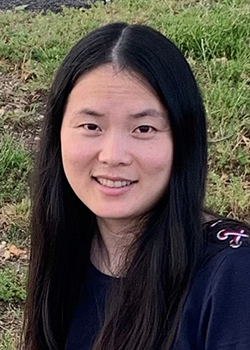
Xiaoqian (Janie) Gong
Lecturer
Born and grew up in Hengshui city, Hebei province, China
PhD applied mathematics, Arizona State University
Question: What courses are you currently teaching for spring 2021?
Answer: MAT 170 Precalculus, MAT 171 Precalculus: STEM, MAT 210 Brief Calculus.
Q: Why did you decide to come to ASU as a lecturer in the School of Mathematical and Statistical Sciences?
A: I "grew up" at ASU, working for five years as a graduate teaching associate. Getting back to ASU is like coming home to me. I am passionate about teaching. I like the teaching atmosphere of ASU very much.
Q: What is your favorite mathematics course to teach, and why?
A: I have been teaching both lower and higher levels of undergraduate mathematics at ASU. Among all the classes I have taught, MAT 265 Calculus I, is my favorite. In this course, in my opinion, students start to realize that math is not just about computation, but more about logic. One should use more concise and rigorous mathematical language to describe some intuitions of daily life. For example, starting from this course, students begin to use the concept of limits to describe the continuity of functions.
Q: How would you describe your teaching style?
A: My role as an instructor is to inspire students’ curiosity, stimulate discussions, and act like a guide in the classroom. For example, in my vector calculus class, MAT 460, I did not present the equality of mixed partials of twice continuously differentiable functions directly in the beginning. Instead, I started by leading a group discussion on a “surprising” example of a function that fails this property. This interestingly generated a contradiction to the first instinct that most students have while thinking about this type of problem in class. Not only did the students get the chance to practice the calculation of higher order partials, they also showed their eagerness to know when the equality would be true. In order to meet their needs, I provided the theorem precisely with a rigorous proof.
Q: How did your first semester go, especially considering the COVID-19 pandemic? What adjustments did you make?
A: My first semester went much more smoothly than I had expected, especially considering the COVID-19 pandemic. I made remote teaching more like in-person teaching by interacting with students live in class. For example, I use the breakout room feature in Zoom for group work discussion and collaboration, the annotation feature to engage students participation while I am lecturing, and the poll feature to gather feedback from students. I respond to students’ emails and queries in a timely manner. I also reach out to students as often as I can.
Q: How important is a diverse, equitable and inclusive environment for students?
A: A diverse, equitable and inclusive environment is very important. I believe that intregrated and diverse classrooms promote critical thinking, problem solving and creativity. It is very essential to ensure that all students feel supported and be respected as individuals and as members of groups, so that they are free to learn and explore new ideas and feel safe to express their views.
Q: What advice would you give to college students thinking of possibly majoring in mathematics?
A: Mathematics is particularly broad and subtle. A good way to explore various branches of mathematics is to attend summer internships, conferences and talk with different professors about their research. In addition, persistence and diligence play very important roles in success. Last but not least, the best work is often a result of teamwork.
Q: What do you think is most misunderstood about mathematics by the general public?
A: The general public thinks about mathematics as a tool of performing computations. But the beauty of mathematics lies more in its logic. It is a discipline that encourages rational thinking, problem finding, and problem solving. The beauty of mathematics lies in its ability to analyze phenomena in real life in a concise and rigorous way.
Q: What do you like to do in your spare time for fun?
A: I like hiking, yoga and playing piano.

Younghwan Kim
Lecturer
Born and grew up in Seoul, South Korea
PhD mathematics, Arizona State University
Question: What courses are you currently teaching for spring 2021?
Answer: MAT 242 Elementary Linear Algebra, MAT 243 Discrete Math Structures, MAT 211 Math for Business Analysis.
Q: Why did you decide to come to ASU as a lecturer in the School of Mathematical and Statistical Sciences?
A: First, I love to teach mathematics, and my educational background fits the position. My PhD degree helps me teach college level math better. Second, I am familiar with the ASU system and people because I had been a teaching assistant in the math department for six years, and I worked at ASU as an instructor right after graduation.
Q: What advice would you give to college students thinking of possibly majoring in mathematics?
A: I would say that studying mathematics gives me positive feedback in that while I study mathematics, I could see unexpected connections between concepts and new interpretations of concepts. I could feel the beauty of math, and that makes me explore math more.
Q: What do you think is most misunderstood about mathematics by the general public?
A: There is a belief that math is difficult and boring, but I believe that once we understand it there are a lot of ways to enjoy it. Many interesting problems could be presented in understandable ways to the general public so that they could enjoy them.
Q: What do you like to do in your spare time for fun?
A: Work out, travel, spend time with my family.
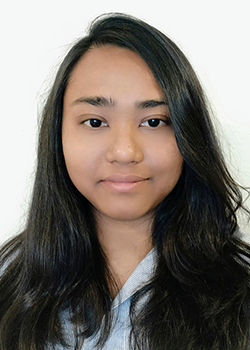
Sabiha Mahzabeen
Lecturer
Born and grew up in Dhaka, Bangladesh
MS mathematics and statistics, Minnesota State University, Mankato; MS applied mathematics, University of Dhaka
Question: What courses are you currently teaching for spring 2021?
Answer: MAT 210 Brief Calculus, STP 226 Elements of Statistics, MAT 117 College Algebra (online).
Q: How would you describe your teaching style?
A: One of my important goals while teaching mathematics and statistics is to help students to become independent thinkers, capable of approaching, framing and solving problems on their own. I use a three-step learning model, which consistently introduces concepts in a progression. It moves from the concrete to visual representation and then on to the more abstract — questioning and solving written equations and hands-on practice problems. Students are taught not only to know how to do something but also why it works and the practical usage of it. Students' participation and interest is crucial for learning mathematics and statistics.
I attempt to make my classroom to be an engaging place where discussion of relevancy is more important than structured lectures, and where students always feel free to contribute and ask questions. I am a constant learner when it comes to understanding the pace and capacity of my students. I try to accommodate different styles of learning by illustrating concepts in different ways and by collecting informal feedback from students a few times throughout the semester. This helps to address their concerns and allows me to modify my teaching in order to enhance students' learning. When students know their instructor cares and is committed to helping them learn, it can make all the difference. Even-though the satisfaction of students is important for better learning and teaching, especially in mathematics and statistics, I believe that, it should not become a popularity contest while teaching. A teacher is responsible to the society in general and should resist the pressure of lowering academic standards in education.
Q: Do you identify as part of any underrepresented groups? If so, how has that impacted your teaching and how you relate with students?
A: Being a woman is STEM automatically places me in the list of underrepresented groups even if I don’t mention about my religious and racial minority status. Being born, growing up and studying in a south Asian mega city with an extremely diverse population, belonging to a family which has members of two different religious faiths, studied and taught in inclusive university in the USA as an international scholar — all of these experiences laid a very strong foundation in me to be a teacher who can ensure that, regardless of background or abilities, all students feel supported in the process to freely learn and explore new ideas. Most of the time, to my students, I am more learning facilitator than an instructor. No matter where my student is from, or what their story is, I often find some similarity with me. This helps me to understand and pay proper attention to a unique student in helping to succeed in course.
Q: How important is a diverse, equitable and inclusive environment for students?
A: Not only for the school or ASU, I think it is extremely important for any educational institution to be a strong advocate of diversity and inclusion. Inclusive learning infrastructure is not just a positive empowerment, it’s a mandatory establishment for the makeup of a future-proof and competitive institution. Research shows that diverse classroom results improved intellectual engagement and self-motivation. Students educated in diverse environments are trained to interact with people outside of their normal comfort zone which improves their adaptability, tolerance and communication skills. Inclusive education doesn’t just make a student a better person, it makes them a prepared individual. Today’s global economy requires employees that can easily communicate with a variety of clients, customers and partners. An educational institution that embraces diversity can give their graduates an edge in the job market. Besides recruiting and graduating a diverse student population, it is also proven that inclusion of diversity in administration, as well as recruiting and retaining a diverse workforce profoundly improves the overall success of an educational institution.
Q: What do you like to do in your spare time for fun?
A: I consider hiking and reading books as the source of my mental energy during my free time. What else can be more amazing than reading a favorite book while sitting on top of a mountain!
Q: What is something most people do not know about you?
A: It’s not a secret but most of the people do not understand that I am an ambivert.
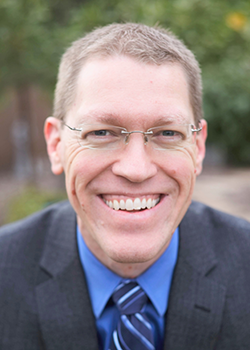
Alan O'Bryan
Lecturer
Born and grew up in Columbus, Indiana
PhD mathematics education, Arizona State University
Question: What courses are you currently teaching for spring 2021?
Answer: MTE 320 Conceptual Foundations of 7-12 Mathematics Curriculum and Assessment, MTE 592 Research (Research in Undergraduate Mathematics Education 2), MAT 117 College Algebra.
Q: How does your teaching style and vision align with the ASU Charter?
A: ASU’s Charter calls for us to “(assume) fundamental responsibility for the economic, social, cultural and overall health of the communities it serves.” The foundation of any success we might have in this mission is our ability to improve access to high quality educational experiences for Arizona students. Working with current and future secondary teachers to help them better understand the mathematics they teach, better understand how to create coherent lessons, units, and courses, and better understand how students learn is the best way I know how to contribute to the goals in ASU’s Charter.
Q: How important is a diverse, equitable and inclusive environment for students?
A: I think it’s critically important. A lot of studies show that students do better when they have access to mentors who they feel represent them. On top of all other initiatives, having a diverse and inclusive environment is a necessary component to maximizing the success of all students.
Q: What do you think is most misunderstood about mathematics by the general public?
A: I often hear two different perspectives about mathematics when I talk to people.
1. They disliked mathematics because they didn’t see how it was useful to them and they struggled to remember all of the various rules and procedures they were asked to memorize.
2. They enjoyed mathematics because it was “black and white” with only one correct answer to each question. I think that both of these reflect a fundamentally flawed view of what mathematics is really about.
To me, mathematics is about reflecting on and attempting to communicate one’s reasoning and understanding to others as well as taking seriously the reasoning of others. It’s a fundamental failure of our mathematics education system that more students do not encounter classroom experiences with this focus.
Q: What do you like to do in your spare time for fun?
A: I enjoy indoor rock climbing, painting and reading.
Q: What is something most people do not know about you?
A: I paint model miniatures and have won several national awards for my work. Over the years some companies have hired me to paint the “box art” for commercial releases of their products.
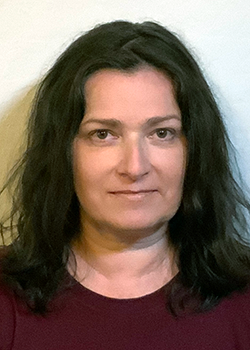
Tamara Rodic
Lecturer
Born and grew up in Belgrade, Serbia (former Yugoslavia)
MS mechanical engineering, Arizona State University; MS mechanical engineering, University of Belgrade, Serbia
Question: What courses are you currently teaching for spring 2021?
A: MAT 210 Brief Calculus, MAT 211 Math for Business Analysis, MAT 117 College Algebra Online.
Q: Why did you decide to come to ASU as a lecturer in the School of Mathematical and Statistical Sciences?
A: I truly enjoy teaching, and I heard from some friends that ASU was looking to hire several lecturers. At the time, I was working as an adjunct faculty at Chandler-Gilbert Community College. The timing was good — my children had become more independent — so I decided to try a full-time job. I am also an ASU graduate, and it feels great to be back, though in a different role.
Q: What is your favorite mathematics course to teach, and why?
A: My favorite course to teach has been precalculus (college algebra/trigonometry), because I have witnessed the most student “aha” moments in those classes.
Q: How would you describe your teaching style?
A: Active learning, constant interaction with students during my lectures, focus on students’ understanding, real-life examples. I try to be as clear as possible in my explanations, and I look for ways to connect new topics to students’ previous knowledge.
Q: How important is a diverse, equitable and inclusive environment for students?
A: A diverse, equitable and inclusive environment is important for everyone. We may have our differences, but we are all human beings, after all, and we should care for each other, and treat others the way we want to be treated.
Q: What advice would you give to college students thinking of possibly majoring in mathematics?
A: If you enjoy math — go for it! Be patient and persevere. I wanted to study pure math, but I let others convince me to go with engineering instead. And still, I’ve spent most of my career teaching math.
Q: What do you like to do in your spare time for fun?
A: I enjoy walking and hiking with my family and friends, playing badminton and tennis, board games, going to concerts (classical music), reading. I love jigsaw puzzles and Sudoku. I sang in a choir back in Serbia, and also in Mexico. I have yet to find a choir to join here in the U.S.
Q: What is something most people do not know about you?
A: I used to be afraid of dogs when I was young. I don’t eat eggs — except in cakes. I like languages – I am fluent in three: Serbian, Spanish and English. I also learned Russian in school but I have not had the opportunity to use it, so I kind of “lost” the ability to speak it.

Larry Schneider
Lecturer
Born and grew up in Brooklyn, New York
MS predictive analytics, Northwestern University
Question: What courses are you currently teaching for spring 2021?
Answer: STP 429 Applied Regression, STP 420 Introduction to Statistics, DAT 250 Data Science and Society.
Q: Why did you decide to come to ASU as a lecturer in the School of Mathematical and Statistical Sciences?
A: After spending three years as a planning analyst in the ASU Office of the Provost and teaching part-time for two years as a faculty associate in the school, I wanted to move back into teaching full time, having taught high school students for 14 years. I believed that my ASU experience developing retention models would allow me to help students understand how to apply the concepts that I would be teaching them in class. My youngest daughter graduated in 2017 from ASU, so after four years of visiting and exploring the Phoenix area, we made the decision to change our lifestyle and I started searching for a position at ASU. The goal was to live somewhere where we would never see snow again!
Q: What is your favorite mathematics course to teach, and why?
A: I have enjoyed teaching all my applied statistics courses as they are each a unique experience due to the different student makeup of the class section, which is what I have always enjoyed about teaching. This semester I have also had the opportunity to teach students how to approach data from a different perspective with the DAT 250 course.
Q: How did your first semester go, especially considering the COVID-19 pandemic? What adjustments did you make?
A: Well, my first semester was not really my first semester teaching at ASU, so I was comfortable teaching in ASU Sync mode. Having the spring 2020 experience of teaching part of the semester in the classroom and part of the semester online gave me the confidence to be able to juggle both at the same time when I was in the classroom during the fall 2020 semester. At the beginning of the fall semester, I told my students that they needed to be patient with the technology challenges, but our overall goal was flexibility.
Q: What advice would you give to college students thinking of possibly majoring in mathematics?
A: Math majors tend to be creative thinkers and a major in mathematics allows you to follow either a theoretical or applied path. So, all math options should be considered when deciding on a major including statistics and data science!
Q: What do you think is most misunderstood about mathematics and statistics by the general public?
A: I think the general public does not understand how easily statistics can be manipulated, so I have always told my students to research the source of anything they read. Always check the fine print!
Q: What do you like to do in your spare time for fun?
A: Kayaking when I can, biking, watching, and attending my favorite sports — baseball and hockey, enjoying our nonhumid weather!
Q: What is something most people do not know about you?
A: I was a major party candidate for U.S. Congress when I worked in the financial industry and lived in New Jersey.
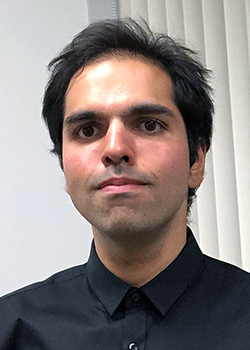
Peyam Tabrizian
Lecturer
Born in Massachusetts, grew up in Austria (went to a French school there), moved to New York in 10th grade
PhD mathematics, University of California – Berkeley
Question: What courses are you currently teaching for spring 2021?
Answer: MAT 267 Calculus for Engineers III, MAT 242 Linear Algebra (online).
Q: What is your favorite mathematics course to teach, and why?
A: Literally the two courses above! I love linear algebra because of its elegance, and also because it gives students a second chance to fall in love with math, especially those who had a bad experience with calculus before. And for Calc III it’s an interesting experience; I used to despise that course, especially in undergraduate, since I didn’t understand a single thing in that class, but when I taught it for the first time in 2018, everything clicked and it was like an explosion in my head! I also love to teach partial differential equations, which is my math specialty.
Q: How would you describe your teaching style?
A: I see myself as being very quirky and fun. People often notice my enthusiasm and passion for mathematics. I love math and I want my students to fall in love with it as well! Also one of my favorite teaching evaluation comments was, “He is a little annoying, but it’s tolerable,” which I guess is true.
Q: Do you identify as part of any underrepresented groups? If so, how has that impacted your teaching and how you relate with students?
A: I officially came out as a member of the LGBTQ+ community in 2019, and I am proud to have a pride flag in my office. It hasn’t impacted my teaching and my relation with my students, which is a good thing actually. One of my biggest fears before coming out was that my friends and colleagues would judge me because of who I am, but I am fortunate to say that they are treating me with the same respect as before I came out.
Q: How important is a diverse, equitable and inclusive environment for students?
A: I think it’s very important! I was blessed to grow up in a French school that represented people from over 50 different countries and backgrounds, and moreover I went to college at UC Berkeley, which was also culturally diverse, and it definitely enriched my life experience as a whole. Especially with the field of mathematics, which, by its very definition, should accept everyone.
Q: What advice would you give to college students thinking of possibly majoring in mathematics?
A: It’s OK to struggle! Mathematics is an unforgiving subject, and there will be times in your math major path where you’ll struggle, but I promise you that, at the end, it will be worth it. Even though it’s almost been five years since I got my math PhD, I still stand in front of the mirror every morning and tell myself, “Who’s got a PhD? You got a PhD!” Seriously, the happiness one gets when doing math is indescribable and makes all the struggle worth it.
Q: What do you think is most misunderstood about mathematics by the general public?
A: Definitely that you need to be a “genius” to do math, and that not everyone can do math. I truly believe that everyone has the seed in math in them, just waiting to be blossomed. It’s completely normal that some people learn math faster than others, but I really think that, given enough time and effort, anyone can eventually understand math and its beauty. It is the root of human thinking after all.
Q: What do you like to do in your spare time for fun?
A: Outside of math I like doing ... math! I currently have a YouTube channel, Dr Peyam, which I’m proud to say currently has over 75,000 subscribers — currently more than the ASU YouTube channel — and on which I post math-related videos, ranging from calculus all the way up to partial dfferential equations. Usually in my spare time, I work on creating and editing the videos, which, incidentally, helped me a lot in my online teaching. I also have a TikTok channel, @drpeyam, on which I post shorter and fun videos. Other than that, I love eating, and petting my bunny, Oreo.
Q: What is something most people do not know about you?
A: I love food! In fact, if you tell me that there’s this amazing restaurant — even if it’s far — I would probably check it out. In fact, I once literally flew to Portland, because they had this amazing donut place called Voodoo Donuts. And let me tell you, it was worth it — yum!
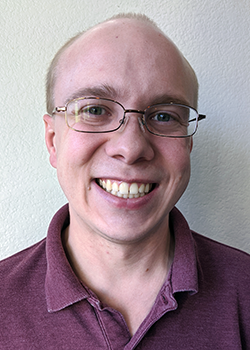
Adam Leighton
Instructor
Born and grew up in the Phoenix, Arizona area
PhD statistics, Arizona State University (expected 2021); MA statistics, Arizona State University
Question: What courses are you currently teaching for spring 2021?
Answer: MAT 211 Math for Business Analysis, MAT 210 Brief Calculus, MAT 266 Calculus for Engineers II.
Q: What is your favorite mathematics course to teach, and why?
A: I like to teach the calc sequence because, for a lot of people, it’s where the relevance of math becomes much more apparent with the variety of applied problems that can be solved. Also, there’s a lot of diversity in students who take calc as opposed to higher-level math courses that might only have engineering/physics/math majors.
Q: How would you describe your teaching style?
A: My teaching style is student-centered, leveraging active learning to help my students become excellent learners. I like to use presentations in small classes and most of every day in my classes revolves around group work.
Q: How does your teaching style and vision align with the ASU Charter?
A: Because student learning is the focus of my teaching, I’m able to pay particular attention to accessibility, inclusion, etc., rather than on the content alone. I create assignments to encourage persistence and engagement.
Q: What advice would you give to college students thinking of possibly majoring in mathematics?
A: Take a variety of classes, even if you think you know what topics interest you. You’ll develop skills you may not otherwise develop, and you might find a topic that interests you more.
Q: What do you think is most misunderstood about mathematics by the general public?
A: That being good or not at math is an inherent skill people have. Just like every other skill, it can be improved and honed through practice and persistence.
Q: What do you like to do in your spare time for fun?
A: I like to play board games, video games and powerlifting.
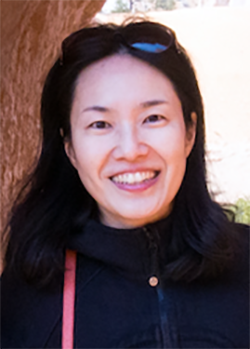
Hyunkyoung Yoon
Instructor
Born and grew up in Seoul, Korea
PhD mathematics Education, Arizona State University
Question: What courses are you currently teaching for spring 2021?
Answer: MAT117 College Algebra, MAT210 Brief Calculus, MAT211 Math for Business Analysis.
Q: How would you describe your teaching style?
A: I am aware that students often think differently about mathematical ideas than I do, and students’ interpretations of what I say and do are not always same as what I intended to convey. Thus, I try to think about how my students think about the ideas I teach. I also try to adjust my instructional actions if I detect inconsistencies between my students’ understanding and the instructional goals I set for them.
Q: How did your first semester go, especially considering the COVID-19 pandemic? What adjustments did you make?
A: Last semester, one of my first-year students told me that he was taking courses in his apartment. He said he had no opportunities to make friends. I didn’t realize that first-year students had no chance to enjoy campus life. I thought about myself. I first met more than 80% of my current friends when I was a first-year student. Right after that, I created group work, and asked students to work together after giving them Zoom links.
Q: What do you think is most misunderstood about mathematics by the general public?
A: Most misunderstood about mathematics by the general public is, “mathematics is so difficult, so mathematics has nothing to do with people’s lives.” However, learning mathematics helps people interpret the world throughout their lives. For example, people are using mathematics to interpret COVID-19 media data such as death rate or graphs representing total confirmed cases per day.
Q: What do you like to do in your spare time for fun?
A: I enjoy spending time with my family, hiking and going to the gym.
More Science and technology

ASU at the heart of the state's revitalized microelectronics industry
A stronger local economy, more reliable technology, and a future where our computers and devices do the impossible: that’s the…

Breakthrough copper alloy achieves unprecedented high-temperature performance
A team of researchers from Arizona State University, the U.S. Army Research Laboratory, Lehigh University and Louisiana State…

4 ASU researchers named senior members of the National Academy of Inventors
The National Academy of Inventors recently named four Arizona State University researchers as senior members to the prestigious…

